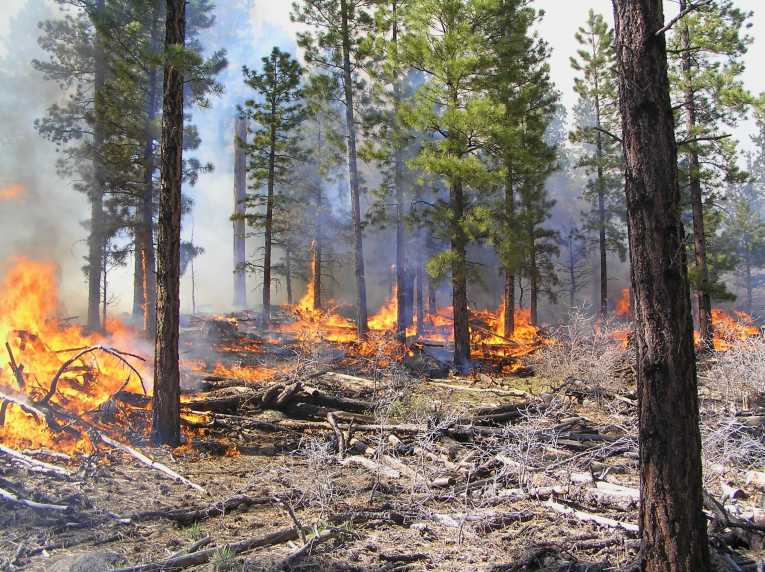In areas where many trees have been killed by pine beetle infestations, forest fires can spread more quickly, new research says. The dead trees are much drier than live wood, as are the red needles. The way fire behaves in areas struck by pine beetles, such as much of British Columbia and Montana, is changing dramatically in a short time.
The trees essentially become standing fuel, and, just as anyone who has ever started a campfire knows, dry wood burns faster than wet. Though this fact may seem obvious, researchers stress that they need to better understand how the trees burn to create more effective fire management plans, especially since the mountain pine beetle's territory seems to be spreading east. They also need to understand how the percentage of live and dead trees may affect the behavior of wildfires, to develop more specialized plans.
Flames from beetle-struck trees can reach 200 to 300 feet, and fires can spread to three acres in roughly two minutes--or over 100 acres in an hour--according to fire analyst Sonny Stiger, says Eve Byron in the Helena Independent Record.
One ember from a dead tree can travel a quarter mile, and if it hits another dead tree is likely to ignite it, says forest service ecologist Matt Jolly, writes Matt Volz in an Associated Press article. Fire fighters must also deal with more large trees snapping above them, potentially blocking escape routes.
Russ Parsons, an ecologist with the Forest Service, is working to develop a fire fighting system for forests containing many trees killed by beetles, says Volz. Understanding the dynamics of these fires will also also prepare authorities to tell communities when to evacuate.
Fears of rampant fires have led to suggestions to cut down the dead trees, but this could reduce biodiversity and make regeneration of the ecosystem difficult.
Mountain pine beetles aren't limited to the west-though they have historically attacked lodgepole pines, they have been reported to spread to jack pines, bringing them further east through Canada.
They burrow under the bark and lay their eggs in the trees, bringing in fungus that helps to kill the trees. Some experts fear the mountain pine beetle-and the increased risk of fire it brings-could become a cross-continental epidemic. Meanwhile, New Jersey's forests are at risk from the southern pine beetle, which has also affected the southeastern states and Texas.










